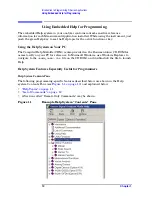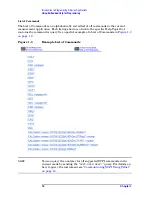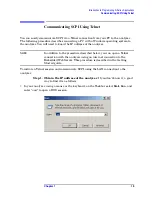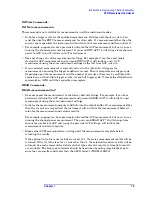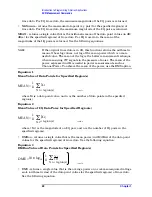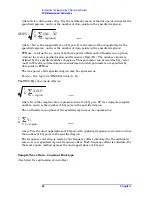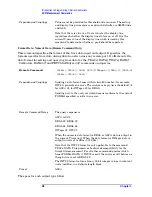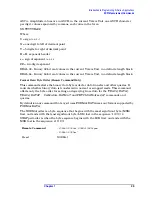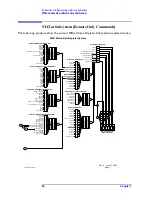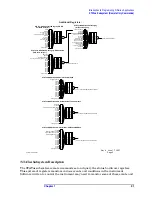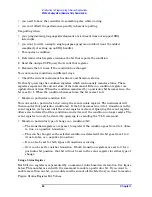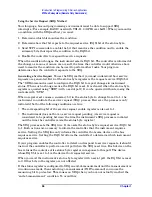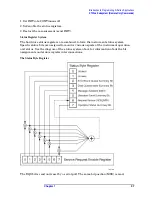
Chapter 1
23
Introduction to Programming X-Series Applications
SCPI Measurement Commands
For I/Q trace data, the rms of the magnitudes of the I/Q pairs is returned. See the following
equation.
NOTE
This function is very useful for I/Q trace data. However, if the original
trace data is in dB, this function returns the rms of the log values which
is not usually needed.
Equation 4
RMS Value of Data Points for Specified Region(s)
where Xi is a data point value, and n is the number of data points in the specified
region(s).
Equation 5
RMS Value of I/Q Data Pairs for Specified Region(s)
where Xi is the complex value representation of an I/Q pair, Xi* its conjugate complex
number, and n is the number of I/Q pairs in the specified region(s).
Once you have the rms value for a region of trace data (linear or I/Q), you may want to
calculate the mean power. You must convert this rms value (peak volts) to power in
dBm:
10 x log[10 x (rms value)2]
• SAMPle - returns the first data value (x,y pair) for the specified region(s) of trace data.
For I/Q trace data, the first I/Q pair is returned.
• SDEViation - returns a single value that is the arithmetic standard deviation for the
data point values for the specified region(s) of trace data. See the following equation.
For I/Q trace data, the standard deviation of the magnitudes of the I/Q pairs is
returned. See the following equation.
Equation 6
Standard Deviation of Data Point Values for Specified Region(s)
Σ
Xi
2
1
_
n
Xi
∈
region(s)
RMS =
vsd27-4
Σ
Xi Xi*
1
_
n
Xi
∈
region(s)
RMS =
vsd27-5
Σ
(Xi – X)
2
1
_
n
Xi
∈
region(s)
SDEV =
–
vsd27-7


